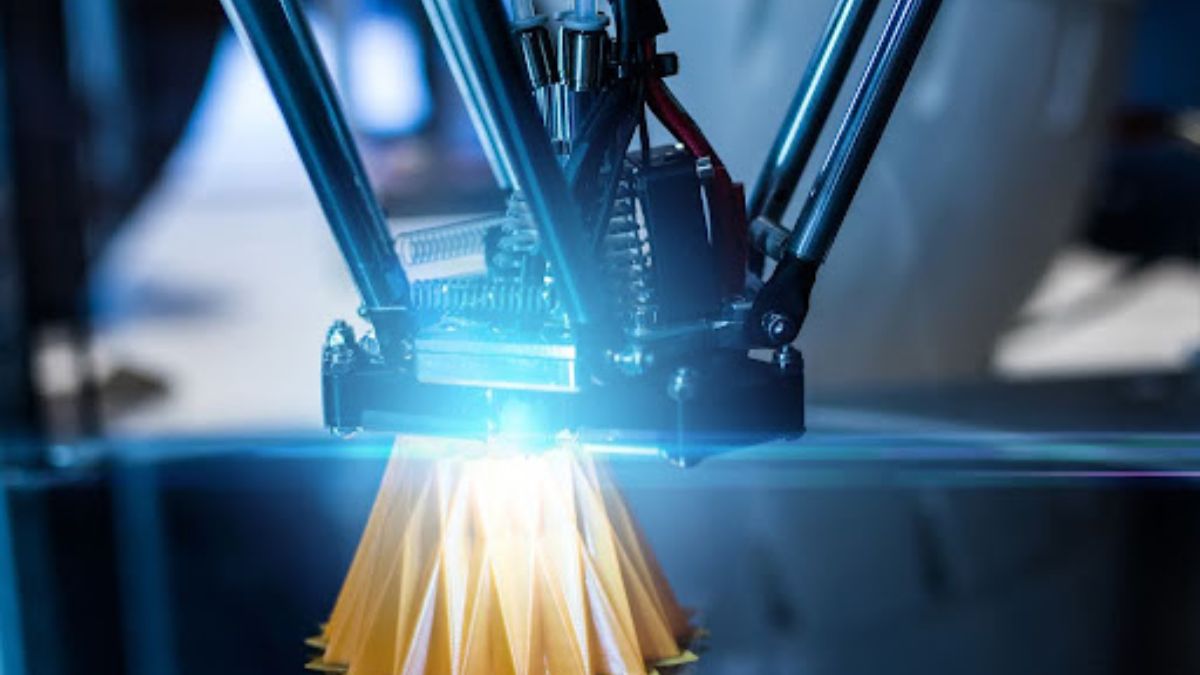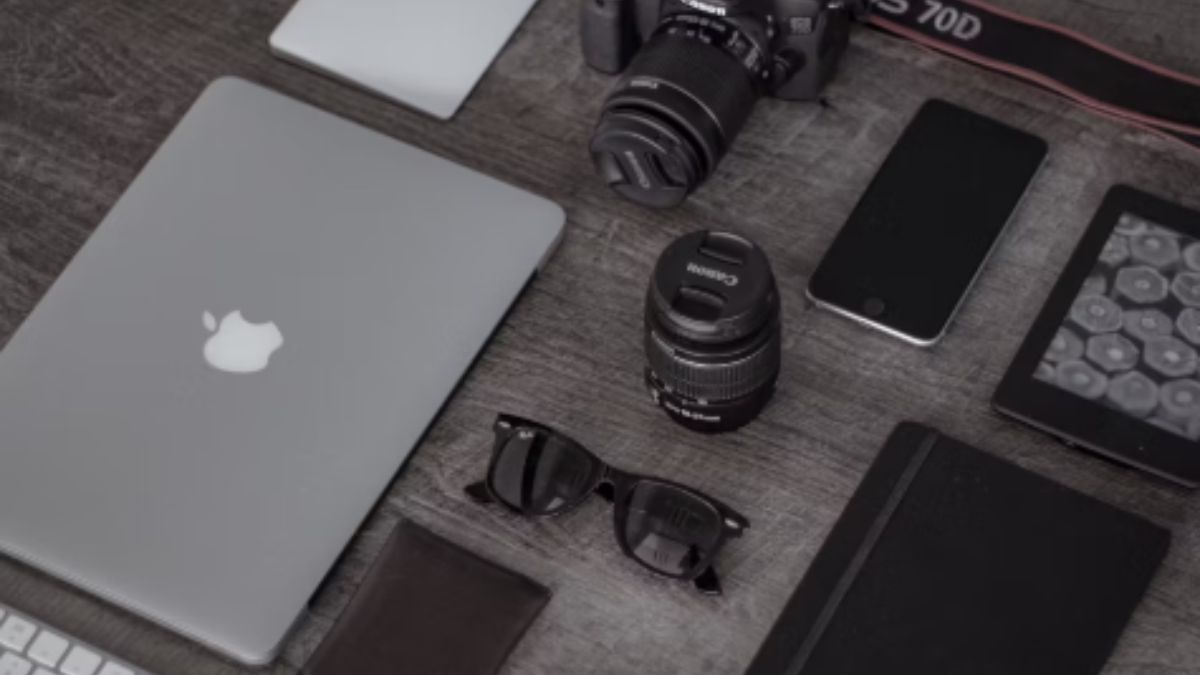TECHNOLOGY
Metal 3D Printing Market: Trends, Opportunities, and Future Growth

The Metal 3D Printing Market has experienced explosive growth in recent years, revolutionizing the manufacturing industry and transforming sectors like aerospace, healthcare, automotive, and more. With advancements in technology, the demand for metal 3D printing is skyrocketing, offering innovative solutions to traditional manufacturing challenges. This article will explore the market’s current state, emerging trends, key drivers, applications, and predictions for the future.
Understanding the Metal 3D Printing Market
Metal 3D printing, also known as additive manufacturing, is a process that creates three-dimensional metal objects by layering materials, typically metal powders or wire. This technique enables high-precision, complex designs that are difficult or impossible to achieve with traditional manufacturing methods. The market has evolved from prototyping and experimentation to mass production, especially in high-tech industries requiring precision-engineered parts.
How Metal 3D Printing Works
- Powder Bed Fusion: One of the most common metal 3D printing techniques, it uses a laser to fuse metal powders layer by layer to create a solid structure.
- Direct Energy Deposition: Uses a focused energy source, such as a laser or electron beam, to melt metal materials as they are deposited.
- Binder Jetting: Involves binding metal powders together using a liquid binder before sintering them to create the final product.
The Metal 3D Printing Market has diversified these techniques to meet various industry needs, from creating medical implants to manufacturing aerospace components.
Key Drivers of Growth in the Metal 3D Printing Market
Increased Demand for Customization and Complexity
The capability of metal 3D printing to produce highly complex and customized parts with minimal wastage has fueled its adoption across sectors. Industries like healthcare benefit from custom implants and prosthetics, while the aerospace sector requires intricate parts for lightweight and efficient designs.
Reduction in Manufacturing Costs and Waste
Traditional manufacturing techniques often involve subtractive processes that create waste and increase material costs. Metal 3D printing reduces waste by building objects layer by layer, minimizing excess material and contributing to cost-effective production. This is particularly advantageous for industries that work with expensive materials like titanium and other specialized metals.
Advances in Metal Powders and Materials
Material innovation has significantly boosted the metal 3D printing market. The development of high-quality, industrial-grade metal powders, including titanium, stainless steel, and cobalt-chrome, has expanded the applications for 3D printing, opening new possibilities in high-stakes industries like aerospace and medical devices.
Market Segmentation in Metal 3D Printing
The Metal 3D Printing Market is segmented based on technology, material type, end-user industry, and geography.
By Technology
- Powder Bed Fusion: Widely used in sectors like aerospace for precise and complex designs.
- Direct Energy Deposition: Known for rapid production, often applied in automotive and aerospace repair parts.
- Binder Jetting: Primarily used for larger parts where speed and cost efficiency are essential.
By Material Type
- Titanium: Popular in aerospace for its strength-to-weight ratio and in medical fields for its biocompatibility.
- Stainless Steel: Used for its durability, corrosion resistance, and cost-effectiveness.
- Aluminum: Ideal for automotive applications requiring lightweight materials.
By End-User Industry
- Aerospace: The leading adopter of metal 3D printing, driven by the need for lightweight, durable, and fuel-efficient parts.
- Medical: Utilized for custom prosthetics, implants, and surgical tools.
- Automotive: Primarily used in high-performance vehicles, prototypes, and custom parts.
By Geography
North America and Europe lead the market due to the high adoption of advanced manufacturing technologies and robust R&D funding. However, the Asia-Pacific region is emerging as a strong contender due to industrial growth and investments in additive manufacturing technologies.
Applications of Metal 3D Printing Across Industries
Aerospace and Defense
In aerospace, weight reduction is crucial for improving fuel efficiency, and metal 3D printing allows for the creation of lightweight, high-strength parts. Metal 3D printing can create parts with complex geometries that are impossible to achieve with traditional methods. Additionally, the defense sector utilizes metal 3D printing for prototyping and producing parts that require rapid iteration.
Healthcare and Medical Devices
The healthcare sector is one of the fastest-growing segments in the Metal 3D Printing Market. Metal 3D printing provides custom solutions for implants, prosthetics, and surgical instruments, enhancing patient outcomes with personalized devices. Surgeons can also use 3D printing to create models of patients’ organs to improve pre-surgical planning.
Automotive and High-Performance Vehicles
Metal 3D printing enables the production of lightweight parts with high structural integrity, which is essential in high-performance vehicles. The automotive industry uses 3D printing to create custom parts, prototypes, and even some end-use components, improving performance and cutting down on lead times.
Emerging Trends in the Metal 3D Printing Market
Hybrid Manufacturing
Hybrid manufacturing, which combines additive and subtractive processes, is gaining traction. This approach allows manufacturers to leverage the benefits of 3D printing while using traditional methods for finishing touches, enhancing product quality and precision.
Increased Adoption of AI and IoT
Artificial intelligence and the Internet of Things (IoT) are making metal 3D printing processes more efficient. AI can optimize design for manufacturing, reducing waste and improving quality control. Meanwhile, IoT enables real-time monitoring, which enhances consistency in production and helps in predictive maintenance.
Development of Advanced Alloys
As the Metal 3D Printing Market grows, so does the need for new materials that perform well under various conditions. Research is ongoing to develop alloys that withstand extreme environments, opening doors for more applications in industries like energy and construction.
Challenges Facing the Metal 3D Printing Market
High Initial Costs
While metal 3D printing can save on materials and production costs in the long run, the initial investment is significant. Purchasing and maintaining high-end 3D printers, along with training skilled operators, represent a substantial upfront cost for companies.
Quality Control and Standardization
Achieving consistent quality in metal 3D printing remains challenging, especially for industries with strict regulatory standards. The lack of uniform standards across the industry can result in variations in material properties, which is a concern for applications requiring high precision and reliability.
Material Limitations and Print Speed
Metal 3D printing processes are not yet as fast as traditional manufacturing methods for high-volume production. Additionally, while the range of materials has expanded, it remains limited compared to traditional metalworking, which can restrict application areas.
Future Outlook for the Metal 3D Printing Market
The Metal 3D Printing Market is expected to continue its rapid growth, driven by technological advancements, cost reduction, and expanding applications. The ongoing research in materials and processing technologies promises to enhance metal 3D printing’s capabilities, making it a more viable option for mainstream manufacturing.
Conclusion
The Metal 3D Printing Market represents a transformative force in modern manufacturing, providing industries with the ability to create complex, custom, and lightweight parts that are both cost-effective and efficient. With its applications rapidly expanding and technologies advancing, metal 3D printing is well-positioned for further growth and innovation. Whether in aerospace, healthcare, or automotive, this technology offers exciting possibilities for the future of manufacturing.
TECHNOLOGY
Finding High-Quality Electronic Devices & Tools: Everything You Need to Know

It can be hard to keep updated with the latest technological devices as retailers constantly work to churn out newer and better products every year. From regular devices like smartphones and laptops to tools like GPS systems for your car, having the highest-quality products can put you above the rest when it comes to your business and personal needs. If you are in the market for a new electronic device, follow this guide so that you will end up with the best products available today. That is, until the next big thing emerges.
Identify Your Needs
Figuring out what you want from a product is the first thing you need to do before you start perusing your options. For example, if you need a new computer for work, you have to think about all of the tasks you will perform on it. This will set you up with a list of all of the non-negotiable features to look for. You should also think about how often you will use the product and how well it will integrate into your daily life. Once you have a good understanding of what you need, you can start looking online or go to a brick-and-mortar location to speak with a tech expert about your options.
Browse Top Retailer Websites
A great starting place is to make a list of your top technology retailers. These can be sellers of trusted products that you have used before or brands that you think have a good reputation for selling quality devices. Once you have three or four in mind, you can start browsing their websites to see the latest products they have to offer. These websites should have expert ratings of each product and detailed photos with descriptions to help you make your decision.
Read Customer Reviews
Before purchasing an expensive electronic device, it is important to get opinions from your peers on how well they work. This can be done in many ways. You can search online forums, look up reviews on third-party websites, or read reviews directly from the retailer’s website. If you want to see a lot of reviews of different brands, head to this Romanian product review website, where you can see which high-quality electronic devices rank the highest among real customers. These user reviews can help paint a better picture of each product and give examples of how they are used in real-world scenarios.
Understand Quality Indicators
Quality indicators of a product usually come from brand reputation, materials used, and certifications. For example, if you buy a product from a brand that you have used in the past and have never had issues with, then you know that a new product from the same brand will likely deliver similar results. As for materials used, this is something you may have to look for in person. Go to the nearest tech retailer so that you can hold the product in your hand. While there, you can also ask a tech expert about the materials used to construct it to see if it is made well.

When looking for a new piece of technology to add to your collection, remember that taking a bit of time to read reviews and seeing the product in person will help you make the best decision. Use these tips to walk away with a reliable electronic device that will be a welcome addition to your home or office.
TECHNOLOGY
The Role of Quality in Tank and Storage System Decisions

When it comes to selecting tanks and storage systems, whether for industrial, agricultural, or commercial use, quality is not just a desirable trait; it is a fundamental requirement. The materials used, the manufacturing standards followed, and the system’s durability can significantly influence operational efficiency, safety, and long-term cost-effectiveness. With so many options available in the market, decision-makers must prioritize quality above all else to ensure reliability and performance. This blog post explores six core aspects of how quality plays a pivotal role in tank and storage system decisions, influencing everything from structural integrity to environmental compliance.

Material Selection and Durability
One of the first and most critical aspects of quality in tanks and storage systems is the choice of materials. High-quality tanks are constructed from materials that match the intended contents, whether that’s water, chemicals, fuel, or food products, and are resistant to corrosion, UV degradation, and temperature fluctuations. For example, stainless steel is often favored in chemical and food storage due to its resilience and non-reactive properties. Polyethylene tanks with UV inhibitors are widely used for water storage in outdoor environments. Inferior materials may lower upfront costs but can lead to early degradation, leaks, or contamination, requiring costly replacements or repairs. Ensuring quality through proper material selection means investing in longevity and safety.
Structural Integrity and Engineering Standards
Ensuring the structural integrity of tanks and storage systems is crucial for safe and reliable operation. Quality tanks are designed to withstand environmental stresses, pressure changes, and everyday wear without compromising their function. Engineering standards guide these designs, setting requirements for materials, welds, and construction. For instance, proper installation of tank stands is important to support the weight and maintain the stability of above-ground tanks, preventing deformation or failure. Without adherence to these rigorous standards, tanks may be prone to leaks, cracks, or collapses, leading to costly damages or safety hazards. Following established engineering guidelines ensures that tanks perform effectively over their lifespan.
Safety and Compliance Considerations
Quality manifests in the system’s ability to meet industry safety requirements and environmental regulations. Storage tanks often hold hazardous or sensitive materials that, if leaked or mishandled, could pose severe risks to personnel and ecosystems. High-quality systems incorporate features like secondary containment, pressure relief valves, and anti-corrosion linings that prevent accidents. They come with certifications indicating compliance with OSHA, EPA, or FDA standards, depending on the application. Cutting corners with low-quality tanks jeopardizes safety and can result in heavy fines, legal liabilities, and reputational damage. Compliance is a byproduct of quality and is vital for maintaining trust and accountability.
Maintenance Efficiency and Lifecycle Costs
Another dimension of quality in tank systems is how easily and economically they can be maintained over their operational life. Well-constructed tanks require fewer frequent repairs and are easier to inspect, clean, and service. Features such as smooth interior surfaces, manways for access, and corrosion-resistant coatings contribute to efficient maintenance. While high-quality systems might have a higher initial cost, their reduced maintenance needs and longer service life make them more economical in the long run. Cheaper alternatives often accumulate costs through frequent breakdowns, unplanned downtime, and higher labor requirements. Thus, evaluating lifecycle cost is key to appreciating the full value of quality.
Customizability and System Integration
Quality includes the adaptability of tanks and storage systems to meet specific operational needs. High-quality manufacturers offer customizable options, such as specific fittings, temperature controls, insulation, and monitoring systems, that ensure seamless integration with existing processes. Customization minimizes compatibility issues and enhances system efficiency. In low-quality tanks, such flexibility is often missing or poorly implemented, resulting in retrofitting complications and inefficiencies. Selecting a quality system means you’re choosing a partner who can tailor solutions to your requirements, further supporting productivity and workflow consistency.
Reputation and Vendor Reliability
The source of your tank or storage system plays a huge role in determining its quality. Reputable manufacturers with a history of excellence are more likely to follow strict quality assurance processes, use superior materials, and provide dependable customer support. These vendors are more transparent about their product certifications and are willing to back their products with warranties and technical documentation. Choosing a supplier based solely on price can result in poor after-sales support, limited product documentation, and inadequate warranty coverage. Working with a trusted vendor ensures the quality of the product and the reliability of service, which is invaluable for long-term operations.

Quality is the cornerstone of every effective tank and storage system decision. From material strength and regulatory compliance to lifecycle cost and vendor support, each factor reinforces the idea that cutting corners in quality can have serious consequences. By prioritizing well-built, reliable systems, businesses protect their investments and enhance operational efficiency, safety, and sustainability.
TECHNOLOGY
How to Evaluate Technical Skills When Hiring Web Developers

Hiring a skilled web developer is one of the most important steps when building a strong online presence. Whether you’re launching a new website, improving an existing platform, or creating a custom web app, you need developers who not only understand your vision but also have the technical ability to bring it to life.
While resumes and interviews help, they don’t always reveal the full picture of a candidate’s technical skills. Knowing how to properly evaluate a developer’s capabilities ensures you’re hiring the right person for the job- and not just someone who can talk the talk.
This guide breaks down how to assess technical skills clearly and effectively so you can hire web developers with confidence.
Understand Your Project Requirements First
Before diving into skill evaluations, you need a clear understanding of your project’s technical needs. Are you building a front-end user interface or a full-stack web platform? Will your website require integrations with APIs, databases, or third-party tools?
Write down what you expect the developer to do. This can include:
- Designing web pages using HTML/CSS
- Coding interactivity with JavaScript
- Using frameworks like React or Vue.js
- Managing backend systems with Node.js, PHP, or Python
- Handling databases such as MySQL or MongoDB
- Deploying to cloud platforms like AWS or DigitalOcean
By defining what skills are needed, you’ll be in a better position to measure whether a candidate has what it takes.
Review Their Portfolio and Past Projects
One of the simplest and most effective ways to evaluate technical skills is by reviewing a developer’s past work.
Look for the following in their portfolio:
- Websites or apps that function smoothly
- Clean, user-friendly design
- A variety of features that demonstrate versatility
- Links that work and don’t lead to errors
- Sites optimized for mobile and different browsers
A good portfolio gives insight into the developer’s real-world experience and shows you the quality of their work. Ask for links to live sites or a GitHub repository.
Test for Core Coding Skills
While portfolios are great, they don’t always prove that a developer wrote the code. That’s where technical tests come in.
You can test for specific skills depending on the role, which includes:
- Front-End Developer Tests
- Back-End Developer Tests
- Full-Stack Developer Tests
Use platforms like HackerRank, CodeSignal, or custom in-house tests to evaluate skill levels.
Use Real-World Scenarios
A great way to evaluate technical skill is by giving candidates a task that mimics something they’d do on the job.
Real-world tasks give you a clear idea of how well a candidate can apply their skills in practical situations. They also show how they approach problem-solving, which is just as important as the final result.
Check Their GitHub or Code Repositories
Developers who are active on GitHub often share their code for others to see. This can be a valuable window into their technical style.
You don’t need to be a developer yourself to see whether their code is neat and organized. If you’re unsure, ask a technical advisor to take a look.
Assess Problem-Solving and Debugging Abilities
Technical skills go beyond writing fresh code. A good developer should also be skilled at debugging and fixing errors.
Watch how they handle roadblocks. Do they stay calm? Do they know where to look? Can they explain their thought process? These are key indicators of a strong developer.
Consider Their Comfort With Tools and Frameworks
Most modern development jobs require the use of certain tools. A good web developer should be familiar with:
- Code editors like VS Code or Sublime
- Version control systems like Git
- Frameworks such as React, Angular, or Vue.js
- CSS preprocessors like SASS or LESS
- Project management tools like Trello or Jira
When evaluating candidates, ask them to describe the tools they use daily and how comfortable they are with each. Their answers can give insight into how fast they’ll adapt to your workflows.
Include Soft Skill Evaluation in Technical Interviews
While this article focuses on technical skills, don’t forget that communication, teamwork, and responsibility are just as important.
During the technical interview, observe how well the candidate can:
- Explain their code or choices
- Listen and ask questions
- Accept feedback or suggest improvements
- Work through a coding challenge calmly and confidently
A skilled developer who communicates clearly will be easier to work with in the long run.
Use Hiring Platforms That Pre-Screen Talent
If evaluating technical skills feels overwhelming, you can use trusted platforms that pre-vet developers for you. Sites like FreeUp, Toptal, and Upwork allow you to hire from a pool of tested professionals.
With Freeup pricing, for example, you’re not only getting skilled developers but also transparent rates and flexible hiring options. You can hire for hourly, part-time, or full-time roles based on your budget and needs. The platform pre-screens freelancers, saving you time on the early stages of technical evaluation.
Don’t Skip Reference Checks
Once you’ve found someone who seems technically sound, always check references. Ask past clients or employers:
- What type of work did the developer do
- How well they met deadlines
- Whether they handled technical challenges efficiently
- How they worked within a team or with project managers
Even a quick email or phone call can confirm whether your top pick is as good in practice as it appears on paper.
Be Clear About Your Expectations
Even the best developer may struggle if expectations aren’t clear from the start. Before making a final offer:
- Define the scope of the job
- Share timelines and delivery goals
- Agree on tools and communication methods
- Make sure they’re comfortable with your tech stack
This sets both sides up for a smoother working relationship and fewer misunderstandings.
Keep Your Hiring Process Consistent
Consistency is key when evaluating multiple candidates. Stick to the same tests, interview format, and review process for each applicant. This ensures fairness and helps you make smarter comparisons.
Document your process for future hires so your team always knows how to evaluate technical skills effectively.
Hire With Confidence
Hiring a skilled web developer doesn’t have to be stressful. By focusing on clear project needs, evaluating real-world skills, and using structured assessments, you can identify candidates who truly match your goals.
Use portfolios, live coding tasks, and problem-solving challenges to dig deeper than a resume. And if you’re short on time or unsure where to start, platforms with transparent systems can give you access to pre-vetted professionals quickly.
Interested in learning more? Browse our other blog posts to gain insights into a range of topics.

 Cartoon1 year ago
Cartoon1 year agoUnlocking the Potential of Nekopoi.care: A Comprehensive Guide

 Game1 year ago
Game1 year agoExploring Aopickleballthietke.com: Your Ultimate Pickleball Destination

 BUSINESS1 year ago
BUSINESS1 year agoWhat Companies Are In The Consumer Services Field

 BUSINESS1 year ago
BUSINESS1 year agoUnraveling the Mystery of 405 Howard Street San Francisco charge on Credit Card

 HOME IMPROVEMENT1 year ago
HOME IMPROVEMENT1 year agoVtrahe vs. Other Platforms: Which One Reigns Supreme?

 TECHNOLOGY1 year ago
TECHNOLOGY1 year agoThe Guide to Using Anon Vault for Secure Data Storage

 ENTERTAINMENT11 months ago
ENTERTAINMENT11 months agoUnderstanding Bunkr Album: A Comprehensive Guide

 ENTERTAINMENT1 year ago
ENTERTAINMENT1 year agoThe Epic Return: Revenge of the Iron-Blooded Sword Hound
















